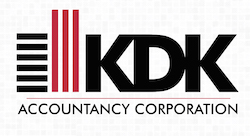On the back of the gig economy, making ends meet has taken on many forms.
From Uber drivers to freelance web developers, there’s a growing group of 1099 workers in the labor force – some have a side job in addition to a permanent position, others have become full-time contractors.
In either case, the percentage of workers in alternative work arrangements, including independent contractors or freelancers, jumped to 15.8 percent in 2015 from 10.1 percent a decade earlier, after barely budging in the 10 years before that, according to a report by labor economists Lawrence Katz and Alan Krueger.
And for those who recently received a 1099-MISC or a 1099-K in the mail, this tax season has its advantages and challenges. To make the most of it, here’s what to know ahead of April 18:
When are you a freelancer?
“Part of the problem is, many of these people are picking up a side gig, but they don’t necessarily think of themselves as self-employed,” said Peter Burridge, chief commercial officer at Hyperwallet.
“When you cross over into the world of self-employed, all of the obligations are on them to pay self-employment tax and contribute to their own retirement,” he said.
You can read the other half of this article on CNBC here: http://cnb.cx/2kR0kUV





